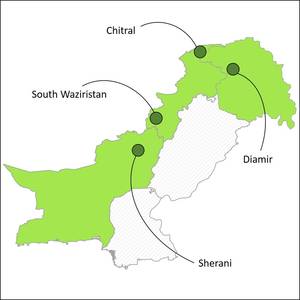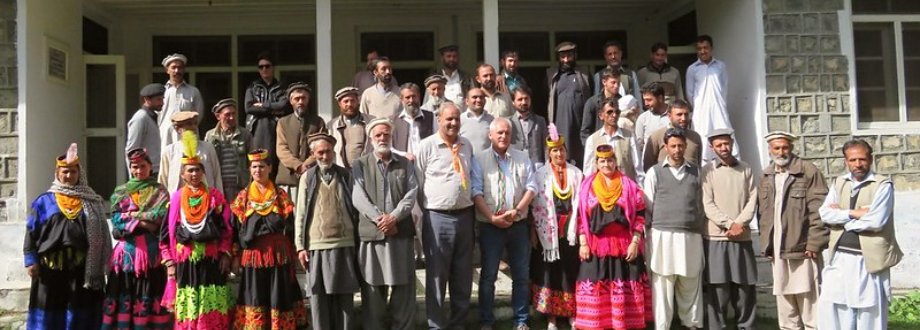Pakistan
Chilgoza forests can mainly be found in the dry temperate zone of Pakistan, where there is less rainfall compared to snowfall. Chilgoza trees grow between 2 000 to 3 350 metres above sea level in the Hindukush-Karakoram-Himalaya region of Northen Pakistan. Chilgoza pine forests hold tremendous importance from both ecological and socio-economic perspectives, occupying a critical niche in biodiversity protection and in economic activities such as livestock ranging, non-timber forest products (NTFP), harvesting, etc. Chilgoza forests are important for the maintenance and protection of vital ecosystem services such as carbon storage, soil and flood protection, water recharge, regulation of downstream flows essential to human consumption, irrigation and hydro power generation. Moreover, the potential economic benefit from pine nuts is worth billions of rupees contributing to local livelihoods.

IMPACTS
The Restoration Initiative (TRI) project in Pakistan focuses on the improved and sustainable management of Chilgoza forests, thus leading to the generation of multiple products, services and functions. These include improved local livelihoods through Chilgoza pine nut value addition, value chain development and climate change mitigation.
The Pakistan project’s objective, under the global TRI programme, is “to contribute to the restoration, protection and sustainable management of Chilgoza pine forests to provide global environment benefits and enhanced resilient socio-economic development”.
The project is structured into four interlinked components:
- policy development and integration;
- implementation of restoration programmes and complementary initiatives;
- capacity building and finance mobilization; and
- knowledge sharing and partnerships.

